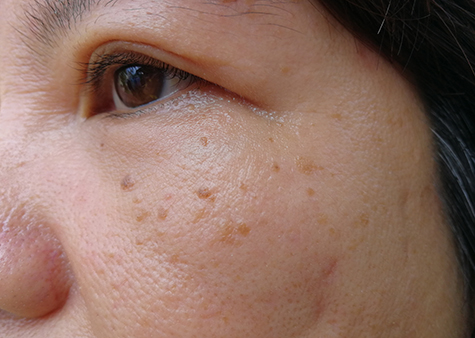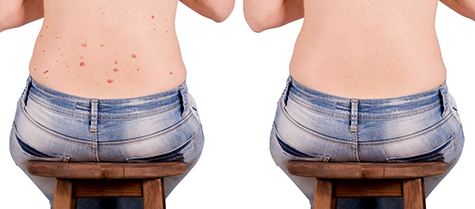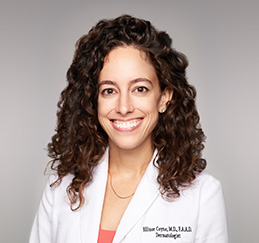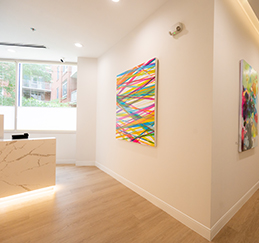What Types of Benign Growths Can Be Removed?

A dermatologist can safely remove many types of benign growths. These include, but are not limited to:
How Do I Prepare for Benign Growth Removal?
Preparing for your benign growth removal will vary depending on the type of growth you are having removed. Generally, you should avoid shaving, waxing, or otherwise removing hair from the treatment area before your appointment. For more specific information, review these pages on our website:
What Should I Expect with Benign Growth Removal?
The method used for your benign growth removal will depend on the type of growth you are having removed. The most common method is excision. During an excision, the skin is typically numbed using a local injectable anesthetic. Then, your dermatologist will carefully cut the growth away using a surgical blade or scissors. For larger growths, stitches are placed following an excision.
Some other options for benign growth removal include:
- Lancing
- Cryotherapy
- Electrocautery
- Curettage
What Should I Expect After Benign Growth Removal?

Benign growth removal is typically a quick, uncomplicated procedure completed in the office with minimal downtime. You may feel some mild soreness or discomfort in the treated area following the procedure, but this can be controlled using over-the-counter pain medication such as ibuprofen or acetaminophen. Be sure to keep the area clean and follow wound care as directed by your dermatologist. If a benign lesion is larger and stitches are placed, you may also need to minimize physical activity for a short period following the procedure to allow for proper healing.
Schedule an Appointment
If you have a benign growth that is irritating or unsightly, a board-certified dermatologist can help. Schedule an appointment at Arlington Dermatology to have your growth evaluated, diagnosed, and potentially removed.
To schedule an appointment at Arlington Dermatology, please call our office or contact us online.
Benign Growth Removal FAQs
What causes benign skin growths?
Many factors may contribute to the emergence of a benign growth on the skin. Benign growths can be attributed to genetics, hormonal changes, sun exposure, or trauma/injury to the skin barrier. Some of these are preventable, but other factors, like genetics, cannot be changed unfortunately.
What do cancerous skin growths look like?
There are many types of skin cancer, but the three most common types are basal cell carcinoma, squamous cell carcinoma, and melanoma. Basal cell carcinoma typically presents as a localized red shiny patch, shiny pink bump, or non-healing sore on the skin. Squamous cell carcinoma typically presents as a firm scaly pink bump on the skin that may be painful to the touch. Melanoma may present as an irregular appearing mole or oddly shaped brown-black patch on the skin. In addition, an actinic keratosis is a type of precancerous skin lesion that typically appears as a localized rough, scaly patch.nnIt is important to identify cancerous skin growths early so that they can be appropriately treated and do not spread or affect your overall health.
What is a benign skin growth and how do you get rid of them?
Benign skin growths are lesions that are not considered precancerous or cancerous. They can be removed if symptomatic or cosmetically bothersome. Removal techniques can include shave removal, snip removal, liquid nitrogen treatment, electrocautery (burning), or excision. If you are interested in removal, our board-certified dermatologists can effectively evaluate and safely treat benign skin growths appropriately.
What are some different types of benign skin growths?
Different types of benign skin growths include but are not limited to the following: rn-tCystsrn-tKeloidsrn-tLipomasrn-tMiliarn-tSeborrheic Keratosesrn-tSkin Tagsrn-tSebaceous hyperplasia (overactive oil glands)


